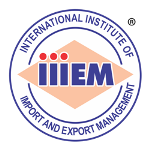
The Export Industry in India is facing several challenges in 2023. Some of the most significant challenges faced by exporters include the following:
-
Infrastructural constraints:
Exporters in India often need more infrastructure facilities in ports, airports, and logistics. These constraints make it difficult for exporters to meet the demands of their foreign buyers on time, resulting in delays and added costs.
-
Regulations and compliance:
Exporters in India often face a complex web of regulations and compliance requirements that they must adhere to. This includes compliance with various laws and regulations such as customs, foreign trade policy, and export-import management.
-
Competition from other countries:
India faces intense competition in the export market. Exporters in India often need help to compete with other countries’ low labor and production costs, making it difficult for them to remain competitive.
-
Currency fluctuations:
The Indian rupee has been fluctuating against other major currencies, making it difficult for exporters to predict their profits and plan their business strategies.
-
Lack of skilled workforce:
The export industry in India often needs a more skilled workforce. This includes a need for more professionals trained in export-import management, logistics, and other related fields. Despite these challenges, there are several ways in which exporters in India can overcome these problems and succeed in the export market. Some of these ways include:
-
Investing in infrastructure:
Exporters can invest in upgrading their infrastructure facilities, such as ports, airports, and logistics, in improving their ability to meet the demands of their foreign buyers on time.
-
Compliance and regulations:
Exporters can invest in compliance and regulations management services to ensure that they adhere to all the laws and regulations related to export-import.
-
Developing new markets:
Exporters can diversify their market base by developing new markets and exploring new export opportunities. This will help them to reduce their dependence on a single market and reduce the impact of competition.
-
Hedging against currency fluctuations:
Exporters can hedge against currency fluctuations by using financial instruments such as forward contracts and options.
-
Skilled workforce:
Exporters can invest in the training and development of their workforce to ensure that they have the necessary skills and knowledge to Succeed in the Export Market. This can include enrolling in an export-import management course.
iiiEM has established itself as a leading institute in Export Import Management Training and has helped thousands of students realize their dream of a successful career in global trade.
Conclusion:
In conclusion, the export industry in India is facing several challenges in 2023. However, by investing in infrastructure, compliance and regulations management, developing new markets, hedging against currency fluctuations, and developing a skilled workforce, exporters in India can overcome these challenges and succeed in the export market.
In addition to the above strategies, exporters in India can also focus on building solid relationships with foreign buyers, offering competitive pricing and high-quality products, and leveraging digital technologies such as e-commerce and social media to promote their products and services. By adopting a strategic and holistic approach, exporters in India can overcome the challenges they face and capitalize on the vast opportunities available in the export market.
